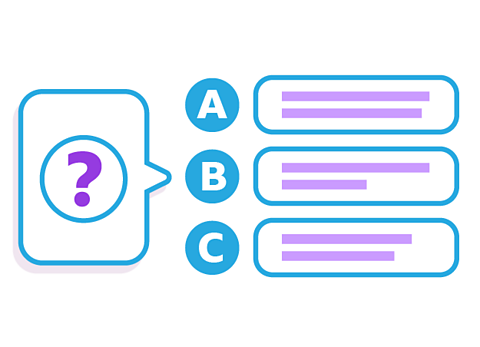Key points about using the passive voice in French

Use the passive voice when talking about what is done to someone or something.
The passive in French is formed using the correct form of être (to be) followed by a past participleThe past participle in English is the form of the verb that usually ends in -ed. For example: I have looked..
The passive is often followed by par, to say something was done 'by' someone or something.
It is important to know which verbA word used to describe an action or state of being. have (regular) verbA regular verb follows a set pattern. past participles and which have (irregular) verbAn irregular verb does not follow a set pattern. ones.
Past participles need to agreeIn French, an adjective must agree with the noun or nouns they are describing, which means that they have to show if they are masculine or feminine (called the ‘gender’) and singular or plural to match the noun. with the nounThe name of a thing such as an object, a place or a person. Nouns are often described as naming words. they describe.
What is the passive voice in French?
The passive voice is used to say what is done to someone or something.
For example:
Les parents sont respectés. – Parents are respected.
Le livre a été écrit. – The book has been written.
How to form the passive voice in French
The passive is formed using the correct form of être (to be) and a past participle. It can be used in any tense, depending on the meaning of the sentence.
The past participle must agree with the noun being talked about. In the example les parents sont respectés (parents are respected), les parents is a masculine plural noun, therefore the ending on the past participle respectés is -s.
In order to describe someone or something doing the action, add par (by) and who or what did it.
For example:
Les parents sont respectés par leurs enfants. – Parents are respected by their children.
Les maisons sont détruites par la tempête. – The houses are destroyed by the storm.
Les maisons is a feminine plural noun, and so the ending on the past participle detruites is -es.
- La photo est mise en ligne par Ana. – The photo is uploaded by Ana.
La photo is a feminine singular noun, and so the ending on the past participle mise is -e.
How to form past participles
The past participles of regular verbs are formed using the endings in the examples below, for -er, -ir and -re verbs:
| Verb type | Infinitive | English | Past participle | English |
|---|---|---|---|---|
| -er | Sorry, something went wrongCheck your connection, refresh the page and try again. | to create | Sorry, something went wrongCheck your connection, refresh the page and try again. | created |
| -ir | Sorry, something went wrongCheck your connection, refresh the page and try again. | to finish | Sorry, something went wrongCheck your connection, refresh the page and try again. | finished |
| -re | Sorry, something went wrongCheck your connection, refresh the page and try again. | to lose | Sorry, something went wrongCheck your connection, refresh the page and try again. | lost |
For example:
L’image était créée par Alex. – The picture was created by Alex.
Le sac a été perdu par Emma. – The bag was lost by Emma.
Some verbs have irregular past participles. Here are some useful ones to learn:
| Infinitive | English | Past participle | English |
|---|---|---|---|
| Sorry, something went wrongCheck your connection, refresh the page and try again. | to take | Sorry, something went wrongCheck your connection, refresh the page and try again. | created |
| Sorry, something went wrongCheck your connection, refresh the page and try again. | to put | Sorry, something went wrongCheck your connection, refresh the page and try again. | finished |
| Sorry, something went wrongCheck your connection, refresh the page and try again. | to build | Sorry, something went wrongCheck your connection, refresh the page and try again. | built |
| Sorry, something went wrongCheck your connection, refresh the page and try again. | to destroy | Sorry, something went wrongCheck your connection, refresh the page and try again. | destroyed |
| Sorry, something went wrongCheck your connection, refresh the page and try again. | to receive | Sorry, something went wrongCheck your connection, refresh the page and try again. | received |
| Sorry, something went wrongCheck your connection, refresh the page and try again. | to read | Sorry, something went wrongCheck your connection, refresh the page and try again. | read |
| Sorry, something went wrongCheck your connection, refresh the page and try again. | to write | Sorry, something went wrongCheck your connection, refresh the page and try again. | written |
For example:
Le livre a été écrit par une femme. – The book was written by a woman.
Les maisons ont été construites récemment. – The houses were built recently.
If there is already an s on the end of a past participle, such as pris (taken) and mis (put) you don’t need to add an s to make it masculine plural.
For example:
Les ballons ont été pris par les garçons. – The balls were taken by the boys.
The passive voice in French - Mini quiz

What is the French translation of the following sentence?
The picture has been created.
L’image a été créée.
What is the French translation of the following sentence?
The books have been read by Jade.
Les livres ont été lus par Jade.
Higher Tier - Quiz - The passive voice in French
Practise what you've learned about the passive voice in French with this Higher Tier quiz.
Now you’ve learned about the passive voice in French, why not explore Higher Tier - Expressing recent and ongoing actions?